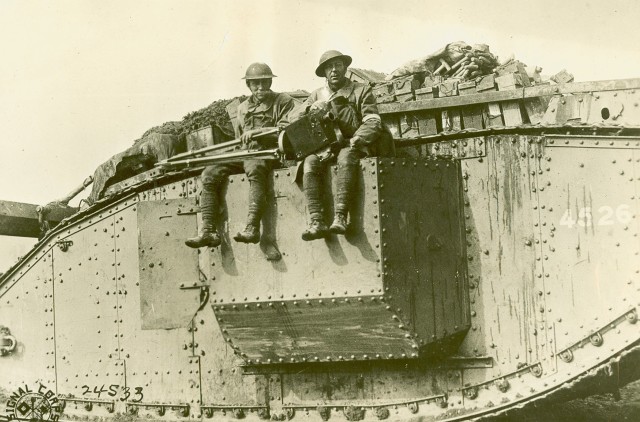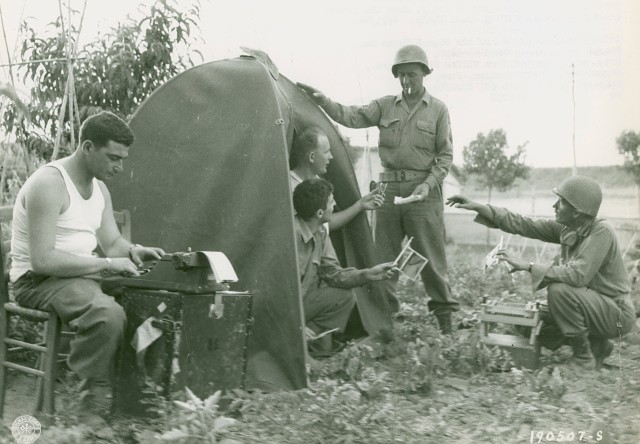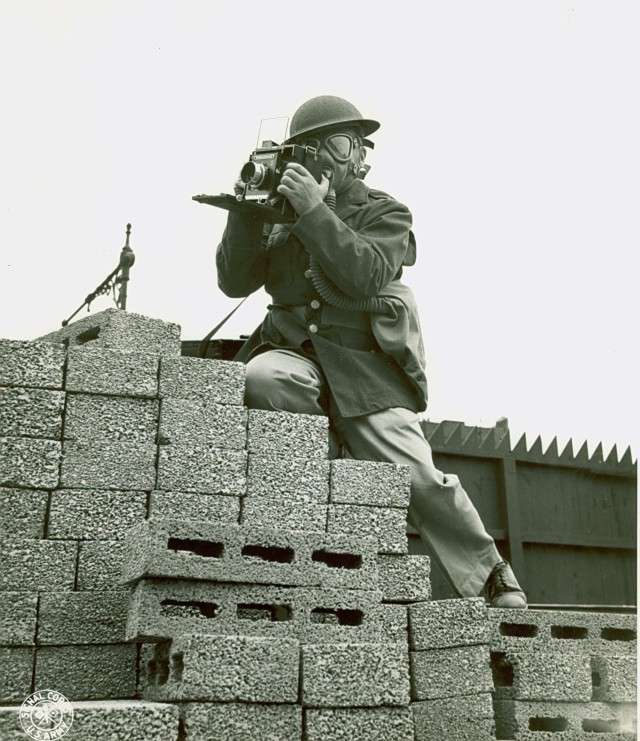Aca,!A"The departure of our boys to foreign parts with the ever-present possibility that they might never return, taught the real value of photography to every father and mother. To many a mother the photograph of her boy in his country's uniform was the one never-failing consolation.Aca,!A?
~Louis Fabian Bachrach, American portrait photographer, 1881-1963
It was during this week in Army history on June 21, 1860, that the Signal Corps became a branch of the United States Army with Congress approving the appointment of a single signal officer to the War Department. While the Signal CorpsAca,!a,,c modest beginnings lay in a wigwag form of communication, it was not long before the importance of photography as a tactical and historical medium was recognized and soon employed as a Signal Corps function by the end of the nineteenth century.
In the early 1880s, while on a climatology expedition, Lieutenant Adolphus Greely realized the informational value of photography as he witnessed Sergeant George W. Rice (regarded as the first Signal Corps photographer) document their journey. In 1894, Greely (by then a Brigadier General and Chief Signal Officer of the Army) added photography to the Signal CorpsAca,!a,,c curriculum at Fort Riley.
With the addition of photography as a Signal Corps function, the corps published a Manual of Photography, written by First Lieutenant Samuel Reber in 1896. ReberAca,!a,,cs manual described in great detail the photographic process, but what is most interesting was his assessment of the qualifications necessary to be a military photographer: Aca,!A"adaptability to surroundings and resourcefulness in difficulties.Aca,!A? He described that in training photographers the importance was in cultivating technical rather than artistic skill due to the conditions under which military photographs are produced: quickly with no conveniences and very little apparatus, as images were used as a tactical tools and sources of information.
By the Spanish-American War, the Signal Corps staff had grown to eight signal officers, one of whom was a photographer. But it was during World War I that photography became an official function of the Signal Corps when in 1917 the Photographic Section responsible for ground and aerial photography was established. World War II saw an increase in the scope of combat photographersAca,!a,,c responsibilities in every major military campaign.
By the Korean War, signal battalions became responsible for combat photography at the army and corps level and included photo sections comprised of seven still and two motion picture photographers as well as six laboratory technicians who processed images in the field. In Vietnam, where field force-level signal battalions contained photographic sections, the South East Photographic Center at Long Binh became the most elaborate photographic facility ever operated in a combat zone up to that time; it had the capability of developing and processing color film. In present-day operations, joint combat camera teams comprised of Army, Navy, Air Force and Marine personnel perform combat photography.
For over a century the photographers of the US Army Signal Corps have told the ArmyAca,!a,,cs story by allowing people everywhere a glimpse into the experiences of the Army soldier. Here at the Army Heritage and Education Center in Carlisle, Pennsylvania, our photograph collection includes hundreds of thousands of Signal Corps images plus hundred of thousands of soldiersAca,!a,,c personal photos and snapshots which have served veterans, researchers, scholars, students and military enthusiasts for decades and which remain available to this day.










Social Sharing